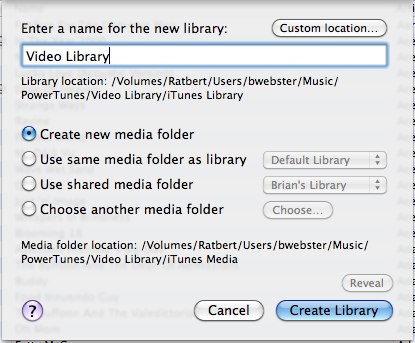
If I go into my application folder, and my user settings and scroll down, you will see the application right here. The first thing is the application itself. Now iPhoto is made up of two separate things. And where do you keep these things? You keep them in your house. I like to think of a photo manager like a house. It was built to hold and protect all of your important images. I’m Curtis Bisel from Scan Your Entire Life and the reason why this is the most important thing is because iPhoto is a non-destructive photo manager. I believe that the most important thing that everyone who uses iPhoto should know is where and how iPhoto stores all of your images and this is all controlled by one tiny little setting right here in the iPhoto preferences called “Copy items to the iPhoto Library”. (If for no other reason than it took me a long time to edit it! ) So if you use iPhoto, please check out this short 6-minute video. You aren't forced to keep all your photos inside of iPhoto if you don't want to. When activated, it will enable you to keep your photos stored on your hard drive or Solid State Drive in any place you would like. Like its big brother Aperture, iPhoto has a rarely talked about feature. I also included a little bit of “advanced” information that many of you long-time iPhoto users may not even know. This is the foundation of how iPhoto works. In fact, it's so important that I decided to put together a nice little tutorial video explaining these basics. I can't think of anything that should be more important to an iPhoto user than knowing where they are really saved. You just honestly haven't really seen them with your own eyes in a long time.

I mean, you know they're stuffed in there somewhere. You can easily relocate your iTunes library to a shared folder such as /Users/Shared that can be accessed by both profiles on your iMac by following the instructions in our tutorial on Transferring your iTunes Library.If you're an iPhoto user, have you ever wondered to yourself where your original photo files are actually stored on your computer? Ultimately, however, unless you have a need to keep your photo and music content separately, consolidating your iTunes and iPhoto libraries may be the simplest solution in the long run.

You basically need to pick a “primary” iPhoto library and ensure that all of the photos you want on your iPad are in that library. The same applies to photos-all of the photos you want on your iPad have to come from a single source: Either a single iPhoto or Aperture library or a single folder of photos on your computer. You can then set up the iPad to sync applications from the “primary” iTunes library. Since you’re on the same iMac, this is really just a matter of physically copying the applications from the “Mobile Applications” folder in the secondary library folder and importing them into the primary iTunes library via drag-and-drop or using the Add to Library option on the File menu. In this case, you will need to basically choose an iTunes library to be your “primary” library and transfer all of the applications that you want on your iPad into that library. Note that it doesn’t matter if content has been purchased with different accounts, as you can easily store content from up to five separate iTunes Store accounts on a single device, but rather that the content is stored in two separate libraries.
DEFAULT LIBRAY IN IPHOTO LIBRARY MANAGER UPDATE
Note that you will lose the ability to automatically update ratings and play counts in manual mode, and will also need to ensure that you manually re-transfer tracks to your iPad whenever you make changes to the tags in iTunes.Īpplications and photos are a different matter, unfortunately, as these always sync automatically regardless of the “Manual” setting in iTunes. This works for the iPad in the same as it does for an iPod, and will allow you to manually add content to your iPad from more than one iTunes library simply by dragging and dropping the content to the iPad icon in iTunes.

You’ll therefore find that you have most of the same options and issues with syncing.įor your media content, you can set the iPad to manual mode by going into the “Summary” screen and selecting Manually manage music and videos. A: To be fair, the iPad isn’t really designed to be a multi-user device any more than a laptop computer is, and in fact the iPad syncs with iTunes in much the same manner as an iPod touch does.


 0 kommentar(er)
0 kommentar(er)
